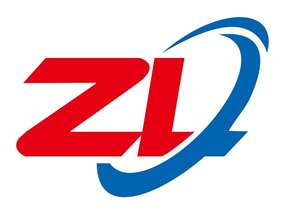OP270
CAPACITIVE LOAD DRIVING AND POWER SUPPLY
CONSIDERATIONS
APPLICATIONS
Low Phase Error Amplifier
The OP270 is unity-gain stable and capable of driving large
capacitive loads without oscillating. Nonetheless, good supply
bypassing is highly recommended. Proper supply bypassing
reduces problems caused by supply line noise and improves the
capacitive load driving capability of the OP270.
The simple amplifier depicted in Figure 12 utilizes a monolithic
dual operational amplifier and a few resistors to substantially
reduce phase error compared to conventional amplifier designs.
At a given gain, the frequency range for a specified phase accuracy is
over a decade greater than for a standard single op amp amplifier.
In the standard feedback amplifier, the op amp’s output resis-
tance combines with the load capacitance to form a low-pass
filter that adds phase shift in the feedback network and reduces
stability. A simple circuit to eliminate this effect is shown in
Figure 10. The added components, C1 and R3, decouple the
amplifier from the load capacitance and provide additional
stability. The values of C1 and R3 shown in Figure 10 are for a
load capacitance of up to 1,000 pF when used with the OP270.
The low phase error amplifier performs second-order frequency
compensation through the response of op amp A2 in the feed-
back loop of A1. Both op amps must be extremely well matched
in frequency response. At low frequencies, the A1 feedback
loop forces V2 /(K1 + 1) = VIN. The A2 feedback loop forces
Vo/(K1 + 1) = V2 /(K1 + 1), yielding an overall transfer function
of VO/VIN = K1 + 1. The dc gain is determined by the resistor
divider at the output, VO, and is not directly affected by the resis-
tor divider around A2. Note that like a conventional single op amp
amplifier, the dc gain is set by resistor ratios only. Minimum
gain for the low phase error amplifier is 10.
V+
+
C3
0.1F
C2
10F
R2
R2 = R1
R2
K1
R2
–
1/2
OP270E
A2
C1
200pF
R1
V
R3
50⍀
–
IN
V
2
V
OP270
OUT
+
+
C1
1000pF
C5
0.1F
C4
–
1/2
OP270E
A1
R1
K1
10F
+
R2
PLACE SUPPLY DECOUPLING
CAPACITOR AT OP270
V–
+
V
IN
V
O
Figure 10. Driving Large Capacitive Loads
ASSUME A1 AND A1 ARE MATCHED.
V = (K + 1)V
O 1
IN
T
s
A
(s) =
O
UNITY-GAIN BUFFER APPLICATIONS
When Rf £ 100 W and the input is driven with a fast, large
signal pulse (>1 V), the output waveform will look like the one
in Figure 11.
Figure 12. Low Phase Error Amplifier
Figure 13 compares the phase error performance of the low
phase error amplifier with a conventional single op amp ampli-
fier and a cascaded two-stage amplifier. The low phase error
amplifier shows a much lower phase error, particularly for fre-
quencies where w/bwT < 0.1. For example, phase error of –0.1∞
occurs at 0.002 w/bwT for the single op amp amplifier, but at
0.11 w/bwT for the low phase error amplifier.
During the fast feedthrough-like portion of the output, the input
protection diodes effectively short the output to the input, and a
current, limited only by the output short-circuit protection, will be
drawn by the signal generator. With Rf ≥ 500 W, the output is
capable of handling the current requirements (IL £ 20 mA at 10 V);
the amplifier will stay in its active mode and a smooth transition
will occur.
When Rf > 3 kW, a pole created by Rf and the amplifier’s input
capacitance (3 pF) creates additional phase shift and reduces
phase margin. A small capacitor (20 pF to 50 pF) in parallel
with Rf helps eliminate this problem.
Figure 11. Pulsed Operation
REV. C
–11–


![]()

![]()
![]()

![]()
![]()


